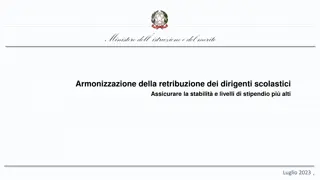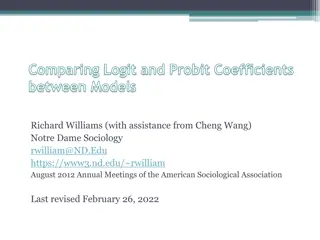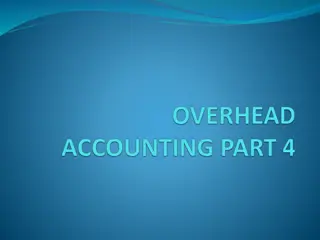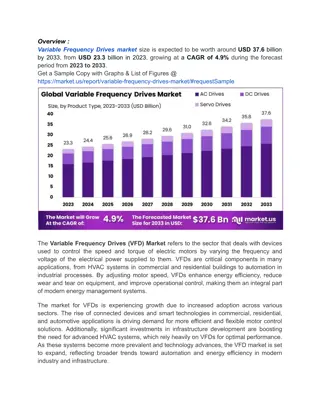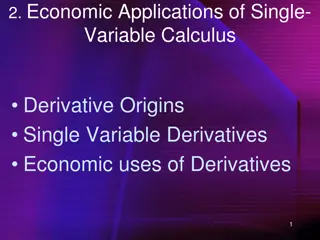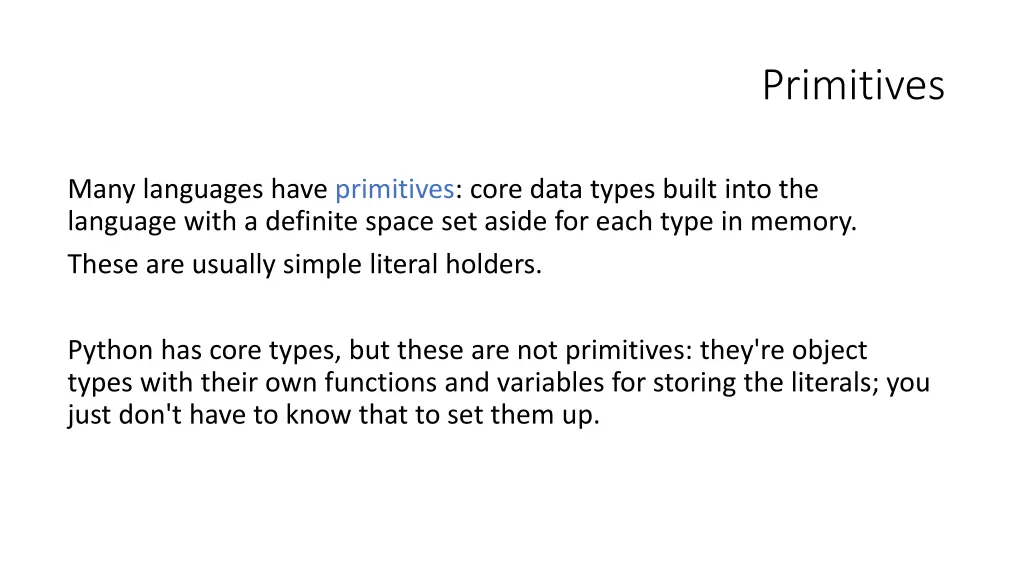
Python Core Data Types Overview: Primitives, Integrals, and Floats
Explore Python's core data types including primitives, integrals (int, bool, float, complex), and floats. Learn about how these types are stored as objects, limitations, and special values. Understand the differences between integers versus floating-point numbers in Python.
Download Presentation

Please find below an Image/Link to download the presentation.
The content on the website is provided AS IS for your information and personal use only. It may not be sold, licensed, or shared on other websites without obtaining consent from the author. If you encounter any issues during the download, it is possible that the publisher has removed the file from their server.
You are allowed to download the files provided on this website for personal or commercial use, subject to the condition that they are used lawfully. All files are the property of their respective owners.
The content on the website is provided AS IS for your information and personal use only. It may not be sold, licensed, or shared on other websites without obtaining consent from the author.
E N D
Presentation Transcript
Primitives Many languages have primitives: core data types built into the language with a definite space set aside for each type in memory. These are usually simple literal holders. Python has core types, but these are not primitives: they're object types with their own functions and variables for storing the literals; you just don't have to know that to set them up.
Built in types Integrals: int : Integers whole numbers. bool: True and False ; evaluate to 1 and 0 respectively, except when printed. Other numbers: float: Floating point numbers decimal numbers (sometimes called doubles in other languages because of how they are stored) complex: For imaginary numbers (actually two floats: one real, one imaginary) Basic sequences: str: Strings text. bytes: Byte binary.
Built in types as objects To see that these are stored as objects, look at this code: >>> a = "hello world" >>> b = a.upper() >>> a hello world >>> b HELLO WORLD >>> c = "hello world".upper() >>> c HELLO WORLD Notice that in the case of "hello world".upper() we haven't even made a variable label; from the start, the string literal is wrapped in an object. Try typing >>> 2. And then hitting the tab key to see what functions and variables are available when numerical literals are wrapped (or use dir(2)).
Ints Ints may look like: 1000000 or 1_000_000 but can't have leading zeros. # 3.6 onwards for the underscores. Since Python 3, the size of int you can have is only limited by the computer memory, and is, therefore, for all practical purposes, unlimited.
Floats Floats may look like: 3.14 10. .001 1e100 3.14E-10 0e0 3.14_15_93 Floats are limited, but to a very large (system dependent) number. You can find it with: >>> import sys >>> sys.float_info For a 32 bit machine picked at random it was ~1.75e308 to -2.22e308. In the unlikely event you need bigger numbers you can construct them from two ints! Floats have two special values: a = float("inf") a = float("nan") # Representing infinity. # Representing the result of a calculation a computer can't do # for example, dividing by zero.
Floats: warning You might think that floats are more exact than ints, because you can have decimal places. However, you'd be wrong: computers are very poor at representing decimal numbers. So poor, it regularly kills people. Ints, on the other hand, are exact. Python matches the IEEE 754 double-precision number standard, but still has issues. If you intend to use Python for critical systems, especially navigation systems, you need to read up on floating point calculations. A good starting point is: https://docs.python.org/3/tutorial/floatingpoint.html We'll mention this again later in the course, looking at the Fractions and Decimal libraries which try to make them more exact, and flag when they're not.
Imaginary numbers Imaginary numbers are floats followed by capital or lowercase "J". 3.14j 10.j 10J .001J 1e100j 3.14e-10j 3.14_15_93j These are joined to real floats with the "+" operator (not addition when there's a "J") to form complex numbers: >>> a = 3.2+2.4J >>> a (3.2+2.4J) We won't deal in detail on complex/imaginary numbers here, but if you're interested then a good starting point is: https://docs.python.org/3/library/cmath.html
Type To find the type of a variable (for example, one you've not back from a function), use type(variableName): >>> a = 10 >>> type(a) <class 'int'>
Operators - + - / * ** // % Unitary - negates a number, e.g. in a = -1. Add; subtract; divide. Multiply. Power, e.g. a**b == ab. Floor divide, i.e. give the result as next lowest integer. Modulus, i.e. remainder of integer division; but note, used sometimes to format strings. Unused in core, but reserved for matrix operations in libraries. @
Comparison operators == != < > <= >= Equal to; not equal to Less than; greater than; less than or equal to; greater than or equal to. For checking whether objects are the same. is not is These result in two special Boolean values: True False In common with many languages, these also evaluate to numbers, False being zero and True being one, but also, numbers can evaluate to Booleans, with zero being False and any other number (including negatives) being True. # Note capital letter
Bitwise operators >> << Bitshifts, e.g. 1 >> 1 == 0 (00000001 >> 1 == 00000000) 1 << 1 == 2 (00000001 << 1 == 00000010) & ^ | Bitwise AND, XOR, OR 00000001 & 00000011 == 00000001 00000001 | 00000010 == 00000011 00000001 ^ 00000011 == 00000010 ~ Bitwise inversion ~00000001 == 11111110
Useful functions abs(x) Returns the absolute positive value, or the magnitude for a complex number. round(number, ndigits) Rounds number to (optional) ndigits decimal points and returns it. If ndigits not there or None, returns nearest int. Watch out for values where a ".5" or equivalent at other magnitudes is being rounded: rounding can be up or down because of storage precision issues.
Precedence Operators have a specific order they are assessed in, if not put in parentheses. For example: a = 3+2*2 == 3+(2*2) (3+2)*2 7 10 Multiplication before addition. != a = -3**2 == -(3**2) (-3)**2 -9 9 Power raising before negation. != A full list is at: https://docs.python.org/3/reference/expressions.html#operator-precedence but always put parentheses around component expressions to clarify for yourself you have what you're after.
Mixed maths What happens if we mix types, for example: a = 2 + 2.0 or, worse: a = "2" + 2 "2" the character plus 2 the number. The last case is especially hard for humans to see the problem with, as we treat characters as if they were numbers, but for a computer, they are completely unrelated: "2" is represented (at simplest) as 00110010 2 is represented (at simplest) as 00000010 Likewise: print ("answer = " + 2) fails, as it expects text not a number.
Weakly typed vs strongly typed We can distinguish between weakly typed languages (which allow easy mixing of variable types, like the number 2 and the character 2 ) and strongly typed languages. We call the changing of one value type to another type casting (or type conversion). We can divide casting into: Implicit casting or coercion: it just happens. Explicit casting by identifier: there's some kind of marker that casting is needed - for example, in Java the type to change to in parentheses: int a = (int)floatB; Explicit casting by procedure/routine: some function is called to do the change.
Implicit casting Most languages have some degree of implicit casting, usually when the change can be made without losing information, so: a = 1 b = a + 2.1 in Python, this will convert a to 1.0 (a float) during evaluation. In Python, all numbers are converted to the more complicated type. Caveat coder, though: in other languages, because ints are more exact, ints have preference. In Java, one int will render many expressions as integer results.
Explicit casting Python jumps straight from implicit casting to explicit casting by procedure, using builtin functions, thus: a = float(x) a = int(x) a = str(x) a = bool(x) And also, not strictly casting, but: a = int(x,base=10) a = oct(x) a = hex(x) # Where x can include a group of numerical text characters. # Likewise. # Convert to a string. # Convert to Boolean True or False. # int to some base. # Convert an int to a octal (base 8) string prefixed with "0o". # Convert an int to a hexadecimal (base 16) string prefixed "0x". In actual fact, these are a special type of function called a constructor, used to make an object of a specific type, rather than a more usual conversion function.
print As an example of how shifty this can be: print(10) Will convert 10 to "10" and print it. But print("here's a number " + 10) won't; you need: print("here's a number" + str(10))


